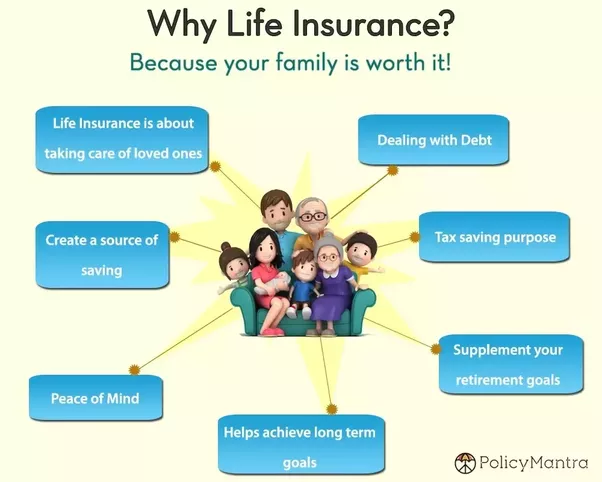Pacific Prime Things To Know Before You Buy
Table of ContentsThe 8-Minute Rule for Pacific Prime9 Simple Techniques For Pacific PrimePacific Prime Things To Know Before You BuyPacific Prime Things To Know Before You Get ThisAn Unbiased View of Pacific Prime
:max_bytes(150000):strip_icc()/terms_i_insurance_FINAL_-3556393b3bbf483e9bc8ad9b707641e4.jpg)
This is due to the fact that the data were gathered for a duration of solid financial performance. Of the estimated 42 million individuals that were uninsured, all yet about 420,000 (regarding 1 percent) were under 65 years old, the age at which most Americans become qualified for Medicare; 32 million were grownups in between ages 18 and 65, about 19 percent of all adults in this age team; and 10 million were youngsters under 18 years old, regarding 13.9 percent of all children (Mills, 2000).
These quotes of the variety of individuals uninsured are produced from the annual March Supplement to the Current Population Study (CPS), carried out by the Census Bureau. Unless otherwise noted, national quotes of people without medical insurance and proportions of the population with various type of insurance coverage are based upon the CPS, the most widely used source of quotes of insurance policy coverage and uninsurance rates.
The 7-Second Trick For Pacific Prime

Still, the CPS is especially beneficial due to the fact that it creates annual estimates reasonably quickly, reporting the previous year's insurance policy protection estimates each September, and because it is the basis for a regular set of quotes for even more than two decades, permitting analysis of trends in coverage gradually. For these reasons, as well as the comprehensive usage of the CPS in other researches of insurance coverage that exist in this record, we depend on CPS estimates, with constraints kept in mind.

The price quote of the number of without insurance individuals expands when a populace's insurance policy status is tracked for numerous years. Over a three-year duration starting early in 1993, 72 million people, 29 percent of the U.S. https://sitereport.netcraft.com/?url=https://www.pacificprime.com. populace, were without insurance coverage for at the very least one month. Within a single year (1994 ), 53 million people experienced a minimum of a month without protection (Bennefield, 1998a)
6 out of every 10 uninsured grownups are themselves used. Although functioning does improve the likelihood that one and one's relative will have insurance policy, it is not a warranty. Even members of family members with two permanent breadwinner have virtually a one-in-ten chance of being uninsured (9.1 percent without insurance rate) (Hoffman and Pohl, 2000).
Some Known Incorrect Statements About Pacific Prime
New immigrants represent a considerable percentage of individuals without health and wellness insurance policy. One analysis has associated a substantial section of the recent growth in the size of the united state without insurance populace to immigrants that got here in the country between 1994 and 1998 (Camarota and Edwards, 2000). Recent immigrants (those who involved the United States within the past four years) do have a high rate of being uninsured (46 percent), yet they and their children account for just 6 percent of those without insurance coverage country wide (Holahan et al., 2001).
The partnership in between health insurance and access to care is well established, as recorded later on in this phase. Although the partnership in between health and wellness insurance coverage and health and wellness outcomes is neither straight nor straightforward, an extensive medical and health solutions research study literary works links wellness insurance policy coverage to enhanced accessibility to care, much better quality, and boosted personal and populace health and wellness condition.
Degrees of analysis for analyzing the results of uninsurance. This conversation of medical insurance coverage concentrates mostly on the U.S. populace under age 65 since practically all Americans 65 and older have Medicare or other public coverage. It focuses especially on those without any wellness insurance coverage for any kind of length of time.
The Of Pacific Prime
The problems faced by the underinsured are in some aspects similar to those encountered by the without insurance, although they are normally less extreme. Wellness insurance policy, nonetheless, is neither essential neither sufficient to obtain access to clinical services. The independent and straight effect of wellness insurance protection on access to wellness solutions is well established.
Others will certainly obtain the healthcare they need also without health and wellness insurance, by spending for it expense or seeking it from companies who supply care cost-free or at extremely subsidized prices. For still others, medical insurance alone does not make certain receipt of care as a result of other nonfinancial barriers, such as an absence of health care providers in their neighborhood, restricted accessibility to transportation, illiteracy, or linguistic and social differences.
The Pacific Prime Statements
Formal research study helpful site regarding without insurance populaces in the USA dates to the late 1920s and very early 1930s when the Board on the Price of Medical Care produced a series of reports about financing doctor workplace brows through and hospitalizations. This issue became salient as the numbers of clinically indigent climbed up throughout the Great Clinical depression.
 Jennifer Love Hewitt Then & Now!
Jennifer Love Hewitt Then & Now! Mackenzie Rosman Then & Now!
Mackenzie Rosman Then & Now! Talia Balsam Then & Now!
Talia Balsam Then & Now! Stephen Hawking Then & Now!
Stephen Hawking Then & Now! Sarah Michelle Gellar Then & Now!
Sarah Michelle Gellar Then & Now!